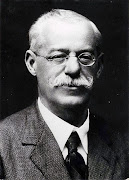por Ramiro Aznar Ballarín
Todos deberíamos poder participar en el ballet de la calle: hombres, mujeres, niños, mayores y por supuesto, también personas con movilidad reducida. Nuestras coreografías, por tanto, deberían incluir todo tipo de movimientos. En este sentido, se debe pasar de un urbanismo unidireccional donde a los ciudadanos se nos obliga a transitar por un recorrido predeterminado, a otro con libertad de movimiento, en cual este último es entendido como “una realidad caótica, impredecible, diversa y mutable” [1]. En teoría, tanto la movilidad es un derecho que debería potenciarse en las calles, ya que es una propiedad inherentemente buena, una práctica que significa tanto un fin en sí misma, pero también, un medio para alcanzar un fin, y por tanto, una llave que abre multitud de oportunidades [2].
Abuelos jugando a la petanca en la plaza de la Telefónica de Zuera. // Old men playing “petanca” in the so-called Telefónica square of Zuera. [photo by Ramiro Aznar Ballarín]
El problema es que hoy en día la mayoría de nuestras calles se han convertido en carreras de obstáculos [3], especialmente para las personas mayores o las que presentan alguna discapacidad [4]. Estas trabas o impedimentos están generadas tanto por barreras físicas o arquitectónicas como sociales [10], pero como Massey [5] apunta, “lo social y lo espacial están mutuamente entrelazados”, y por consiguiente, el espacio debe ser entendido como “un importante constituyente de los procesos socio-espaciales y culturales” que se dan en las ciudades. De esta manera la geografía urbana puede ser entendida como un conjunto de “espacios producidos” o “espacios de poder” [6], entonces ciertas calles de Zuera podrían ser ejemplos de “microgeografías de exclusión o discapacidad” [7, 9], es decir “diseños apartheids” [9] en los cuales personas con diversas discapacitadas quedarían excluidas social y físicamente.
Para muchas personas discapacitadas, el acceso a ciertos lugares es una parte fundamental del cómo se ven reconocidos e identificados en su vida diaria [3]. Por esta razón, los diseños de calles con poca “accesibilidad” podrían tildarse como símbolos de opresión social al limitar la capacidad de este sector de la población para participar de forma completa en la vida urbana [10]. Estos paisajes “discapacitantes” derivan de la concepción histórica que los arquitectos e ingenieros de nuestros edificios y calles tienen del cuerpo humano, ya que la mayoría de las teorías y prácticas arquitectónicas más importantes fallan al no reconocer la diversidad física y psicológica de las personas [11].

El hombre de Vitruvio (Da Vinci, 1487) es el ejemplo por excelencia del hombre como medida de Dios, y precursor de la concepción en arquitectura del “cuerpo normal”, en el que “el cuerpo es entendido como un perfecto microcosmos, y por tanto, su figura debía utilizarse para diseñar la realidad acorde a su composición, proporción y harmonía” [6]. Lefebvre, por el contrario, rechazaba esta racionalidad cartesiana ya que se olvida tanto de la diversidad del cuerpo como del contexto que lo rodea, “los cuerpos se parecen entre sí, pero las diferencias que mantienen son más acusadas que sus similitudes” [6, 11]. [vía pacogonzalez] // The Vitruvius Man (Da Vinci, 1487) is the best example of the human measure and scale of God, and the precursor of the architecture’s conception of the “normal body”, in which “the body was conceived of as a perfect microcosm, or as the figural basis by which to design with compositional, proportional and harmonic authority” [6]. Lefebvre, by contrast, rejects this Cartesian rationality as “narrow and desiccated” due to the fact that it neglects both the diversity of human bodies and the context where they live, “bodies resemble each other, but the differences between them are more striking than the similarities” [6, 11]. [via pacogonzalez]
Por el contrario, poco a poco tanto académicos como profesionales están abogando por una “arquitectura sensible a la diversidad humana” [6, 11, 12, 13, 14]. De acuerdo con Imrie [11], ésta debe ser reflexiva y de “mente abierta", sin bordes, límites ni limitaciones, sensible a todas las diferentes “corporalidades” humanas. Dicho autor esgrime que “lo social” debería ser el punto de palanca en el cual apoyar el diseño de nuestras ciudades y las prácticas y políticas urbanas, un punto “donde la estética y la práctica, el sujeto y el objeto, y el cuerpo y la mente puedan encontrarse". Como resultado esto obliga no sólo a reparar el diseño de las calles y su urbanismo, sino también ha incorporar las denominadas “voces de los discapacitados” en los procesos de toma de decisiones que tengan relación con su rutina urbana [15].
De acuerdo con todo lo dicho en los párrafos anteriores, si se pretende mejorar la calidad de las calles de Zuera y por tanto la calidad de vida de sus habitantes, es necesario llevar a cabo dos actuaciones complementarias. La primera, básica, sería resolver los problemas asociados al paisaje físico de aquellas calles que no promuevan la libertad de movimientos, y en segundo lugar, se tendrán en cuanta las necesidades de un diversidad humana presente en las calles a través de procesos de participación ciudadana, en los cuales se potencie los “derechos de los diferentes” [16].
by Ramiro Aznar Ballarín
Everyone should be able to participate in the street ballet dance: men, women, children, elderly and disabled people. Our new coreographies should include all kind of movements. We must move from a “passage-point urbanism” to an open mobility one, that is to say that mobility ought to be conceived as “a messy, unpredictable, diverse and changeable reality” rather than a “predictable and purpuseful” range of trips, origins and destinations [1]. In theory, movement and mobility are rights that should be enabled and promoted in the streets, they are intrinsically ‘good things’; practices which ought to be propagated as end in themselves, but also, they can be seen as a means to and end and a mechanism for opening up opportunities [2].
The problem is that nowadays the majority of the streets are obstacle courses wich prevent easy movement [3], especially for disabled people, many of whom are elderly [4]. These obstacles are made by both physical and social barriers [10], but for us, as Massey [5] notes, “the social and the spatial are mutually entwined”, and hence, space should be conceived “as an important constituent of socio-spatial and cultural processes”. Furthermore, according to Lefebvre’s understanding of urban geography can be seen as a mix of ‘produced spaces’ or spaces that were ‘landscapes of power’ [6]. Thus, some streets of Zuera can be “good” examples of ‘geographies of exclusion’ [7], ‘design apartheids’ [8] or ‘microgeographies of disability’ [9], in which disabled people are socially and physically excluded.
For many disabled people, access to specific spaces in cities is a consitutive part of how they come to be definde and recognised [3]. Therefore, the inaccesible design of our streets can be understood as a symbol of social oppression because it reduces the ability of these peope to participate fully in urban life [10]. These disabling landscapes derive from the architect’s conception of the human body. It has been argued that the most influential architectural theories and practices fail to recognise bodily and psicological diversity [11].
By contrast, there is an increasing body of literature to claim for a “bodily sensitised architecture” [6, 11, 12, 13, 14]. According to Imrie [11], an ‘open-minded’ and reflexive architecture is needed, without borders or boundaries, and sensitised to the corporealities of the body. He goes on by arguing that it is necessary recentring of ‘the social’ at the fulcrum of design theory and urban practices, “whereby the aesthetic and the practical, the subject and the object, and the body and the mind are brought together”. This eventually calls for the incorporation of a stronger ‘disabled voices’ in the decision-making processes affecting the life circumstances of disabled people [15].
Therefore, if street quality is to be improved, there are two complementary process to tankle. First, poor street conditions for walking should be solved, and secondly, this must be linked to a partocipatory analysis of the individuated needs, as well as the protection of “the rights of difference” [16].
[1] Huxley, M. 1997. Ecologically sustainable cities, environmentally friendly transport or just ‘more work for mother’. Conferences proceedings Women on the move TransAdclaide, 1-4.
[2] Imrie, R. 2000. Disability and discourses of mobility and movement. Environment and Planning 32: 1641-1656.
[3] Imrie R. & Kumar M. 1998. Focusing on Disability and Access in the Built Environment. Disability & Society 13(3): 357-374.
[4] Lavery, I., Davey, S., Woodside, A. & Ewart, K. 1996. The vital role of street design and management in reducing barriers to older peoples’ mobility. Landscape and Urban Planning .
[5] Massey, D. 1996. Space/power, indentity/difference: tensions in the city. In: Merrified, A. & Swyngedouw, E. (Eds.). The Urbanisation of Injustice. Lawrence and Wishart, London, 110-116.
[6] Lefbvre, H. 1991. The Production of Space. Blackwell, Oxford, 468 pp.
[7] Imrie R. & Edwards, C. 2007. The Geographies of Disability: Reflections on the Development of a Sub-Discipline. Geography Compass 1/3: 623-640.
[8] Imrie, R. 1996. Disability and the City: International Perpectives. Paul Chapman Publising, London, 200 pp.
[9] Dyck, I. 1995. Hidden geographies: the changing life-worlds of women with multiple sclerosis. Social Science and Medicine 40, 307-320.
[10] Gleeson, B. 1999. Geographies of Disability. Routledge, London, 253 pp.
[11] Imrie R. 2003. Architects' conceptions of the human body. Environment and Planning D 21: 47-65.
[12] Thrift, N. 1997. The still point: resistance, expressive embodiment and dance. In: Keith, M. & Pile, S. (Eds.). Geographies of Resistance. Routledge, London, 124-152.
[13] Borden, I. 1998. Body architecture: skateboarding and the creation of super-architectural space. In: Hill, J. (Ed.). Occupying Architecture: Between the Architect and the User. Routledge, London, 195-216.
[14] Less, L. 2001. Towards a critical geography of architecture: the case of and ersatz Colosseum. Ecumene 8(1): 51-86.
[15] Bromley, R.D., Thomas, C.J. & Matthews, D.L. 2007. City centre accessibility for wheelchair users: The consumer perspective and the planning implications. 24(3): 229-241.
[16] Gould, C. 1996. Diversity and democracy: representing differences. In: Benhabib, S. (Ed.). Democracy and Difference: Contesting the Boundaries of the Political. Princeton University Press, Princeton, NJ, 171-186.















0 comments :: calles con libertad de movimiento // open-mobility streets
Post a Comment